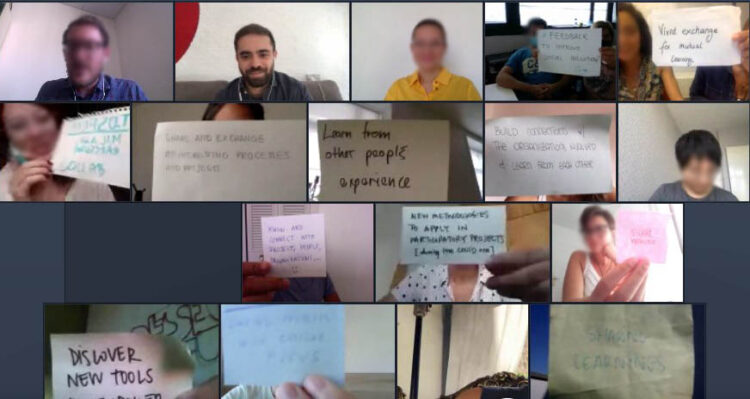Building capacity for urban transformations
How can local design innovators form a learning ecosystem together? A recent publication from PCM Lab director Ingrid Mulder and researcher Alberto Magni discusses the role of a collaborative learning infrastructure for social innovation pilots, using the context of the European research project DESIGNSCAPES.
A vast variety of urban actors are joining forces to bring positive change in the local environment. However, with the increasing scale and complexity of the challenges they face, they are forced to expand their skills to make an impact constantly. To support these local design experiments, Ingrid and Alberto introduce co-design as a transformative community-driven design method to facilitate innovators to continually identify, connect, co-define, and share with other peers their learning journeys to build capacity over time to address societal challenges.
Co-design as transformative community driven design method
The study was part of DESIGNSCAPES, a European research project investigating the transformative power of design for sustainable and responsible innovation in European cities. DESIGNSCAPES funded a hundred mission-driven innovation pilots that were selected along three stages of innovation maturity, varying from feasibility studies to prototype solutions to projects scaling impact to other contexts. It provided an ecosystem of emerging coalitions experimenting with design methods and approaches to bring systemic change. The multi-layered setup provided a great space to engage with these pilots and to gain insight in how to build capacity for urban transformations.

Co-design was used as an overall transformative community driven design method to build an enabling infrastructure that fosters a community of practice across Europe. A series of touch points were designed to support the engagements and collaborative reflection among these participating pilots, such as a Facebook group, newsletter, community coffee breaks and online profiles highlighting the initiatives. Furthermore, dialogic workshops helped the innovators to better articulate and co-develop new knowledge methods and tools to advance the practices. These resulted in 10 in depth training modules on key topics for urban transformations.

Beyond the training modules, the collaborative approach fostered community participation and peer to peer learning networks among pilots. A wide online community of more than 130 member used the dedicated Facebook page as a fruitful communication channel throughout the program and beyond. Connections and relations were particularly strengthened by the social interactions during informal activities as the community coffee break sessions and the dialogic workshops. In these moments, it was easier for pilots to engage in spontaneous and in-depth conversation about their projects and experiences, opening possibilities to create bonds and connections.
For example, during the sessions, one participant realised that she needed to figure out how to better engage new communities of stakeholders. In the sessions, she dove into the topic, identified relevant actors to involve in her project and got in touch with other peers who later helped her connect with the stakeholders with whom she is now planning to establish further collaboration.

Discovering the needs of the social innovation pilots
The co-design approach facilitated connection and collaborative learning between the pilots and holds promise for supporting innovators in their self-development process for their projects. The impact and effectiveness of such approaches are highly dependent on participation and active engagement. The closer 1-on-1 interactions with pilots were crucial to unveil the important insights affecting engagement and participation. The co-design mechanism that helped uncover unconsidered topics to be trained throughout the program guided the adaptation of our learning infrastructure to accommodate their learning needs.
As a result, new expertise was needed to provide training activities. In other words, the more we unveiled new and specific pilots’ needs, the more we realised the need of reaching out to different experts outside the initial network provided by DESIGNSCAPES, to be capable of developing appropriate training activities. This stresses the importance of further exploring how to collaboratively infrastructure learning environments for urban transformation that can involve larger numbers of participants as co-creators and trainers of those emerging topics.
You can read and download the full paper for further elaboration on the capacity building framework and the importance of a collaborative learning infrastructure. You can also watch this video of the Meet the Authors event.
To cite this work please reference to it as follows: Mulder, I. & Magni, A. (2022). A collaborative learning infrastructure to build capacity for urban transformations. Interaction Design & Architecture(s), N. 52, Spring 2022. pp. 119 – 140. Special issue Beyond the Pandemics and the Wars: SLERD Reload. https://doi.org/10.55612/s-5002-052-007
